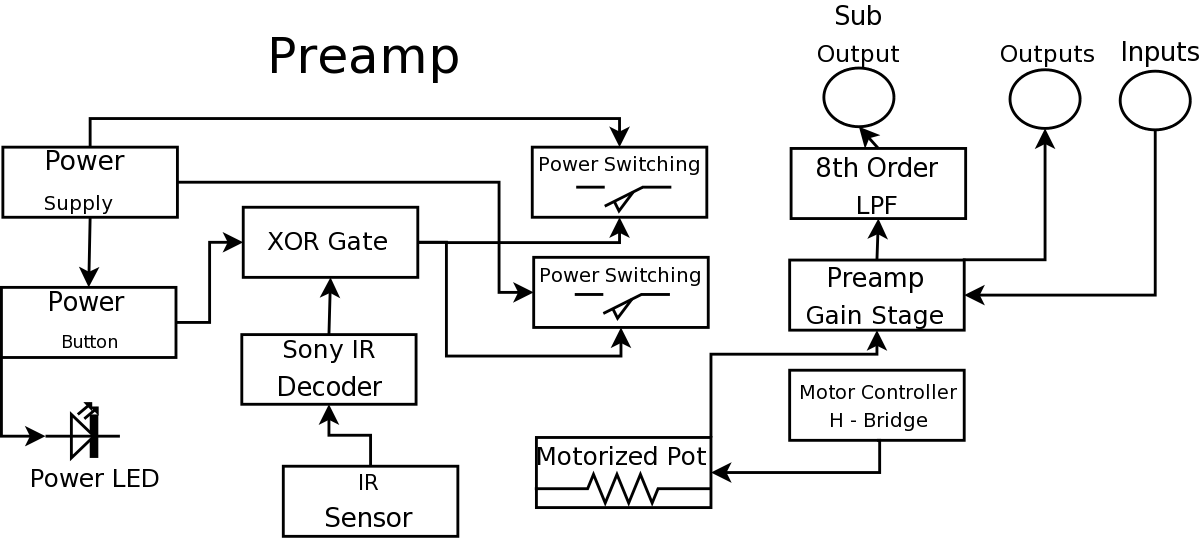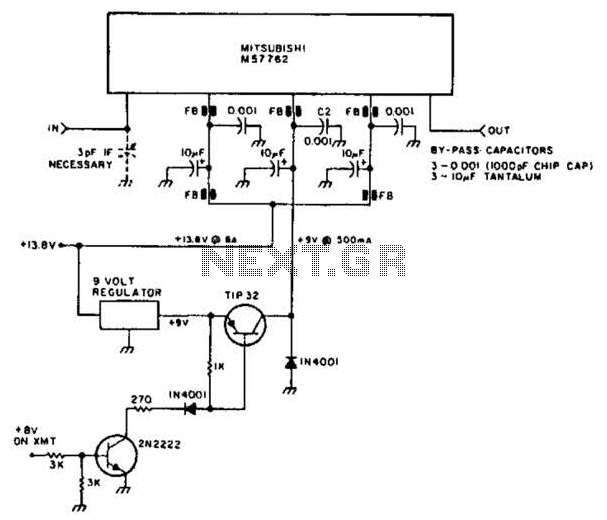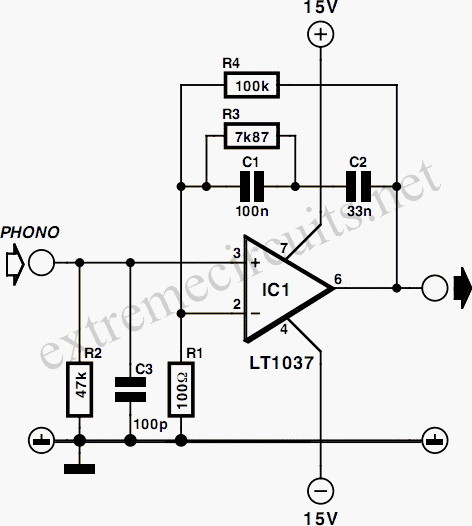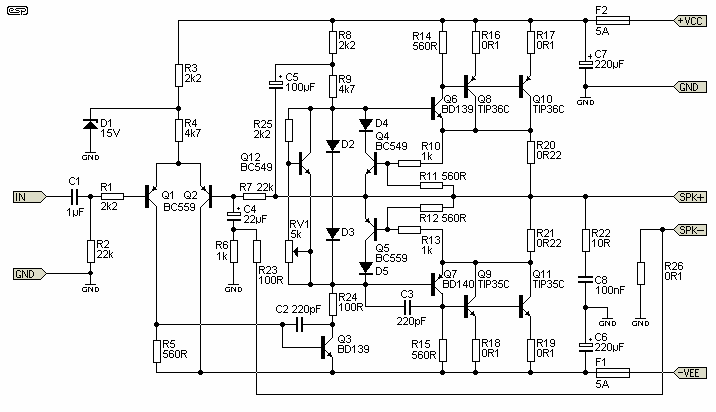
Condenser Pre Amplifier LM 1458
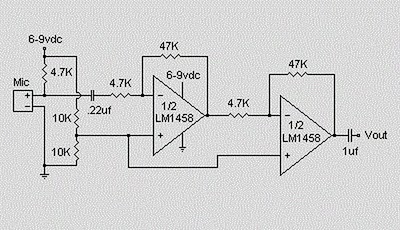
This circuit utilizes an LM1458 dual operational amplifier integrated circuit (IC) to amplify audio signals from a condenser microphone. The amplified output allows the microphone to interface with devices that typically do not accept microphone-level signals. The circuit operates on a power supply ranging from 6 to 9 volts. The output level of the microphone amplifier can be adjusted by connecting a 10k ohm potentiometer. Additionally, the circuit's gain can be increased by modifying the resistor value of 47k ohms, depending on the input sensitivity requirements of the main amplifier system. It is recommended that the microphone be enclosed in a small round housing.
The LM1458 is a dual operational amplifier that is well-suited for audio applications due to its low noise and high gain characteristics. In this circuit, one of the op-amps is configured as a non-inverting amplifier, which provides a high input impedance to accommodate the low-level signal from the condenser microphone. The gain of the amplifier can be set using the feedback resistor (47k ohms) and the input resistor (the potentiometer), allowing for flexibility in sensitivity based on the requirements of the downstream audio processing equipment.
The power supply for this circuit should be stable and within the specified range of 6 to 9 volts to ensure optimal performance of the LM1458. The choice of a potentiometer for output adjustment allows for real-time control over the microphone's volume level, making it suitable for various applications such as public speaking, musical performances, or recording setups.
To enhance the performance of the microphone, proper housing is essential. A small round enclosure not only protects the microphone from environmental factors but also helps reduce handling noise and unwanted vibrations. The enclosure should be designed to minimize acoustic interference while allowing sound waves to reach the microphone effectively.
In summary, this circuit provides a practical solution for amplifying microphone signals, enabling compatibility with devices not designed for low-level audio inputs. The adjustable gain and careful design considerations make it a versatile choice for audio applications.Using a LM1458 dual op amp IC. The circuit takes the audio signal rom the condenser microphone and amplifier it, so you can use the microphone as the input to some device which wouldn`t normally accept microphone level signals. The circuit requires a 6-9 volt supply. Output of the microphone amplifier can be made variable by connecting a 10k © po tentiometer. Circuit`s gain can be increased by men perbesar the value of 47K, depending on the input sensitivity of the main amplifier system. The microphone should be housed in a small round enclosure. 🔗 External reference
The LM1458 is a dual operational amplifier that is well-suited for audio applications due to its low noise and high gain characteristics. In this circuit, one of the op-amps is configured as a non-inverting amplifier, which provides a high input impedance to accommodate the low-level signal from the condenser microphone. The gain of the amplifier can be set using the feedback resistor (47k ohms) and the input resistor (the potentiometer), allowing for flexibility in sensitivity based on the requirements of the downstream audio processing equipment.
The power supply for this circuit should be stable and within the specified range of 6 to 9 volts to ensure optimal performance of the LM1458. The choice of a potentiometer for output adjustment allows for real-time control over the microphone's volume level, making it suitable for various applications such as public speaking, musical performances, or recording setups.
To enhance the performance of the microphone, proper housing is essential. A small round enclosure not only protects the microphone from environmental factors but also helps reduce handling noise and unwanted vibrations. The enclosure should be designed to minimize acoustic interference while allowing sound waves to reach the microphone effectively.
In summary, this circuit provides a practical solution for amplifying microphone signals, enabling compatibility with devices not designed for low-level audio inputs. The adjustable gain and careful design considerations make it a versatile choice for audio applications.Using a LM1458 dual op amp IC. The circuit takes the audio signal rom the condenser microphone and amplifier it, so you can use the microphone as the input to some device which wouldn`t normally accept microphone level signals. The circuit requires a 6-9 volt supply. Output of the microphone amplifier can be made variable by connecting a 10k © po tentiometer. Circuit`s gain can be increased by men perbesar the value of 47K, depending on the input sensitivity of the main amplifier system. The microphone should be housed in a small round enclosure. 🔗 External reference

